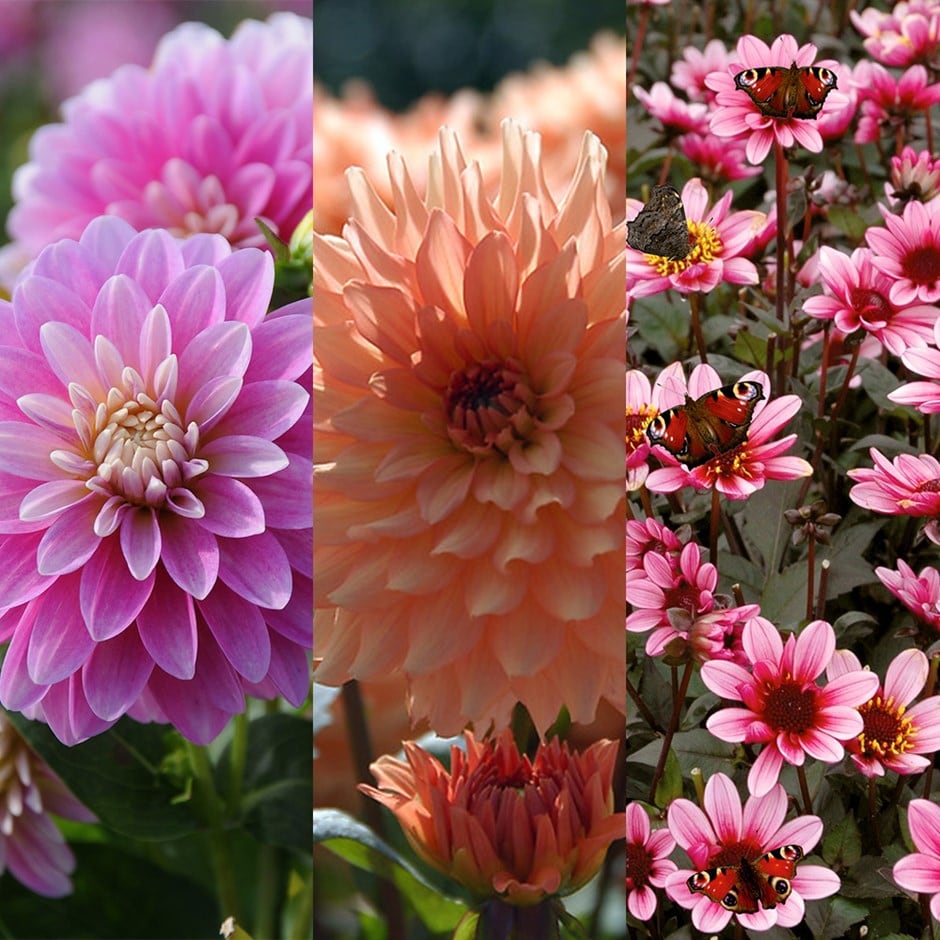Award-winning dahlias for pots collection
dahlia collection
- Position: Full sun
- Soil: Fertile, humus-rich soil
- Rate of growth: Average
- Flowering period: July to September
- Hardiness: Half hardy (may need winter protection)
- Dahlia 'Pretty Woman': The pretty, single flowerheads consist of a row of sugar pink 'petals', which become a darker shade at their base. These surround a dark pink central disc, that turns golden-yellow as it ages. The flowerheads top upright stems and contrast beautifully with the bronze-flushed foliage. Its compact habit makes it perfect for pots and the flowers are also excellent for cut arrangements. Grows to 40cm.
- Dahlia 'Gallery Leonardo': This is a great little performer, that will keep on producing its salmon pink flowers well into autumn if it is deadheaded regularly. Because it is compact it is perfect for patio pots, where it will offer loads of colour with its many-'petalled' flowerheads that can grow as large as 15cm across. Grows to 40cm.
- Dahlia 'Gallery Rembrandt': The colouring of this decorative dahlia is sublime. As the flowerheads open, the innermost 'petals' are a creamy mango, but as they age they turn sugar pink. They are great for cutting, and this will encourage more flowers to come and take their place. Grows to 40cm.
- Garden care: Dahlia tubers can be planted outside after frost, or started off in pots under glass in late winter to early spring. Plant them horizontally approximately 12cm deep, making sure the ‘eyes’ are uppermost. Allow enough room between each tuber so the plants can grow and spread to their full size without being overcrowded. While in growth, provide a high-nitrogen liquid feed each week in June, then a high-potash fertiliser each week from July to September. Stake with canes or brushwood if it becomes necessary. In mild areas, leave them in situ over winter, but protect the crown with a generous layer of dry mulch. In colder areas, carefully lift and clean the tubers once the first frosts have blackened the foliage and allow them to dry naturally indoors. Then place the dry tubers in a shallow tray, just covered with slightly moist potting compost, sand or vermiculite and store in a frost-free place until planting out again.
Dahlias are sought after for their showy flowers, which will often appear non-stop from midsummer to the first frosts. These varieties are all ideal for pots - although there's nothing to stop you popping some in the border too!
In each collection you will receive one tuber of each of the following:
- Humans/Pets: Ornamental bulbs - not to be eaten

